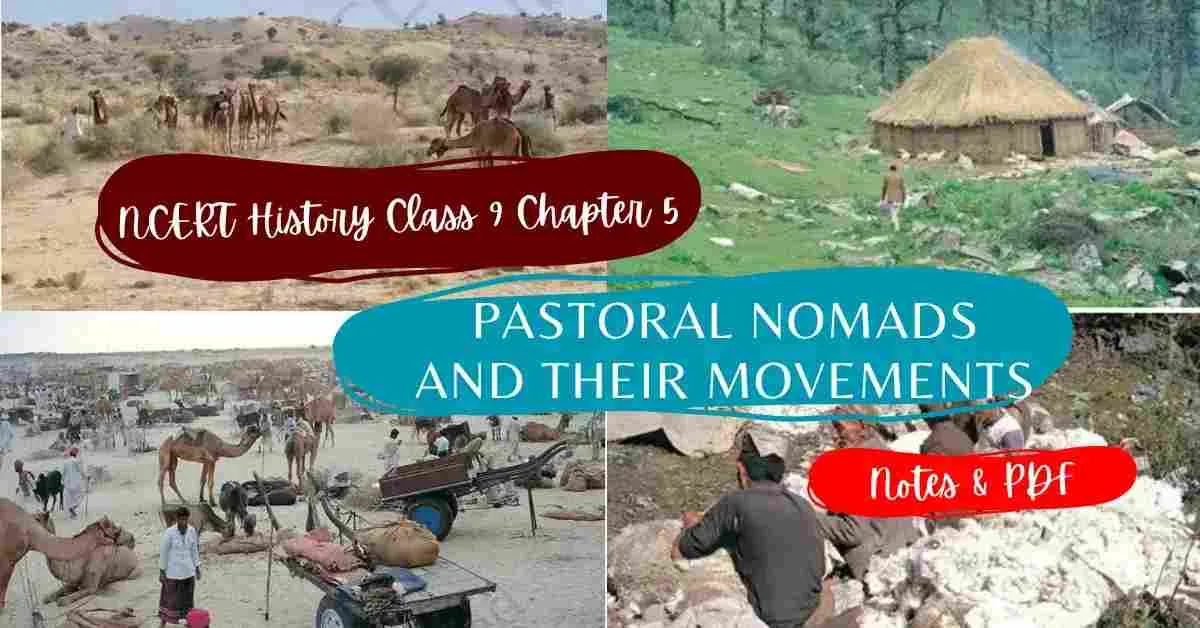Pastoral Nomads and their Movements – Concept & Notes PDF
Topic & sub-topics covered: Pastoral Nomads and their Movements and MCQs Questions: Pastoralists in the Modern World (All single detail notes are exam-oriented).
We have discussed in-depth and exam-oriented pointers that can be asked in the board exam of class 9th about the “Pastoral Nomads and their Movements” from the NCERT History notes for class 9th chapter 5th “Pastoralists in the Modern World“.
Download the NCERT History for Class 9th Chapter 5 Pastoralists in the Modern World Notes PDF
Ace your Class 9 History revision with crisp, exam-oriented notes for Chapter 5, Pastoralists in the Modern World. This Pastoralists in the Modern World Notes PDF explains who pastoral nomads are and why mobility sustains their herds, economies, and culture. It covers core topics with clarity: Pastoral Nomads and their Movements; In the Mountains (Gujjar Bakarwals); On the Plateaus (Dhangars); In the Plains (Gollas, Kurumas, Kurubas); Colonial Rule and Pastoral Life; Waste Land Rules; Forest Acts and Grazing Tax; Criminal Tribes Act; How Did the Pastoralists Cope?; and Pastoralism in Africa (Maasai).
You’ll get timelines, key terms, map cues, and previous-year style questions to lock concepts fast. Designed for quick last-minute review and deeper understanding, these notes highlight cause-effect links, policy impacts, and livelihood changes under colonialism. Download the NCERT History Class 9 Chapter 5 Notes PDF and study smarter – focused coverage, clean language, and everything you need for tests, assignments, quizzes, viva, projects, and board-level preparation.
Pastoral Nomads and their Movements
In the Mountains
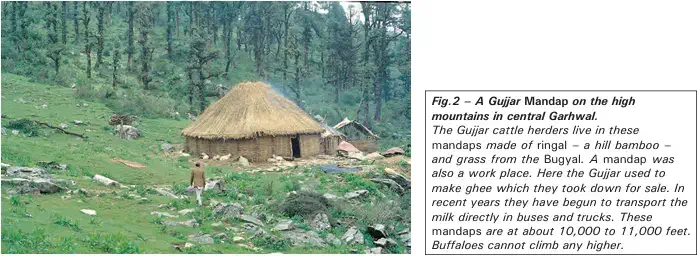
1. Gujjar Bakarwals of Jammu & Kashmir:
- Traditional herders of goats and sheep.
- Migrated to Jammu & Kashmir in the 19th century in search of pastures.
- Seasonal Movement (Transhumance):
a. Winter: Low hills of Siwalik range, grazing in dry scrub forests.
b. April: Began their northward march in groups (called kafila).
c. Summer: Crossed Pir Panjal passes to enter Kashmir valley; rich grasses provided nutritious forage.
d. September: Returned downward to winter base in the Siwaliks.
2. Gaddi Shepherds of Himachal Pradesh:
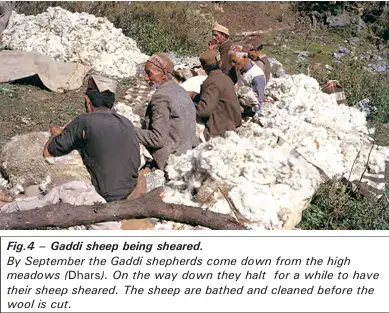
- Also practiced seasonal migration with their sheep and goats.
- Winter: Grazed in the Siwalik hills.
- April: Moved to Lahul and Spiti for summer.
- With snow melting, some went to higher mountain meadows.
- September (return journey):
a. Stopped in Lahul & Spiti to harvest summer crops and sow winter crops.
b. Descended back to Siwaliks for winter grazing. - Cycle repeated every April.
3. Gujjar Cattle Herders of Garhwal & Kumaon (Uttarakhand):
- Practiced seasonal migration between:
a. Winter: Dry forests of the bhabar.
b. Summer: High mountain meadows called bugyals. - Many were originally from Jammu but settled in the UP hills during the 19th century.
4. Other Himalayan Pastoral Communities:
- Included Bhotiyas, Sherpas, and Kinnauris.
- Followed the same cyclical movement pattern between summer & winter pastures.
5. Significance of Seasonal Migration:
- Adjusted to seasonal changes and ensured efficient use of pastures.
- Prevented overuse of grazing lands → allowed pastures to recover naturally.
- Showed a sustainable way of using mountain resources.
- Transhumance → Seasonal migration of pastoralists.
- Kafila → Group migration of Bakarwals.
- Bugyals → High meadows of Uttarakhand.
- Bhabar → Dry forest belt at the Himalayan foothills.
Source A: Gujjars of Kangra
1. Identity & Occupation of Gujjars:
- In the hills of Kangra, Gujjars were an exclusively pastoral tribe.
- They hardly cultivated land → livelihood was pastoral.
- Their wealth consisted mainly of buffaloes.
2. Distinction between Gaddis & Gujjars:
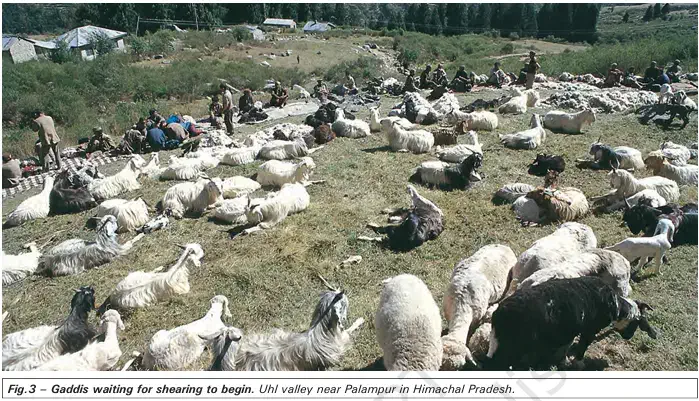
- Gaddis → kept sheep and goats.
- Gujjars → kept buffaloes.
3. Livelihood & Products:
- Lived on the skirts of forests.
- Survival based exclusively on milk products from herds.
- Sold milk, buttermilk, ghee in the markets.
4. Role of Men & Women:
- Men:
a. Grazed cattle.
b. Stayed in the woods for weeks, tending to their herds. - Women:
a. Went to markets daily, carrying baskets with earthen pots filled with milk, buttermilk, and ghee.
b. Each pot contained just enough for a day’s meal → sign of daily subsistence living.
5. Seasonal Movement (Transhumance):
- In hot weather, Gujjars drove their herds to the upper ranges.
- Reasons:
a. Buffaloes enjoyed rich green grass after rains.
b. The cool, temperate climate was suitable.
c. Provided immunity from venomous flies (common in plains).
6. Source Reference:
- Account written by G.C. Barnes in the 1850s.
- Taken from Settlement Report of Kangra (1850–55).
On the Plateaus, Plains and Deserts
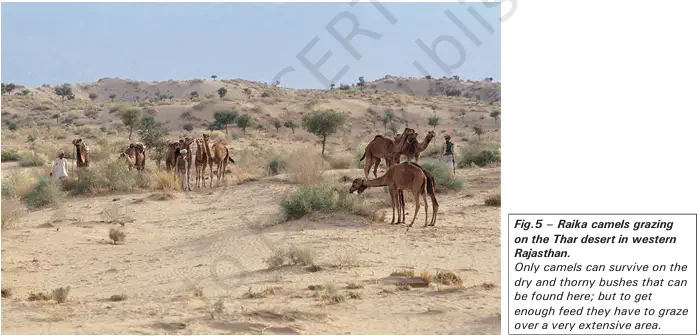
1. Dhangars of Maharashtra:
- Major pastoral community of Maharashtra.
- Early 20th century population: about 4,67,000.
- Occupations:
a. Majority → shepherds.
b. Some → blanket weavers.
c. Others → buffalo herders. - Seasonal Movement (Transhumance):
a. Monsoon: Stayed in central plateau (semi-arid, poor soil, thorny scrub, dry crops like bajra).
b. Plateau became a grazing ground in monsoon.
c. October: Harvested bajra, then moved westward to Konkan (fertile, high rainfall).
d. In Konkan:
i. Welcomed by peasants.
ii. Flocks manured fields and fed on crop stubble.
iii. Shepherds received supplies of rice in return.
e. Monsoon onset: Returned to plateau since sheep could not tolerate wet conditions.
2. Pastoralists of Karnataka & Andhra Pradesh:
- Central plateau = stone & grass covered, inhabited by herders.
- Communities:
a. Gollas → herded cattle.
b. Kurumas & Kurubas → reared sheep & goats; also sold woven blankets. - Lifestyle:
a. Lived near woods.
b. Cultivated small land patches.
c. Engaged in petty trades along with herding. - Movement Pattern:
a. Determined by monsoon vs. dry season (not snow like mountain tribes).
b. Dry season → moved to coastal tracts.
c. Monsoon → returned to dry plateau.
e. Only buffaloes tolerated swampy monsoon conditions in coastal regions.
3. Banjaras:
- Well-known graziers.
- Found in Uttar Pradesh, Punjab, Rajasthan, Madhya Pradesh & Maharashtra.
- Characteristics:
a. Moved long distances in search of good pastures.
b. Traded: sold plough cattle & goods to villagers.
c. Exchanged for grain & fodder.
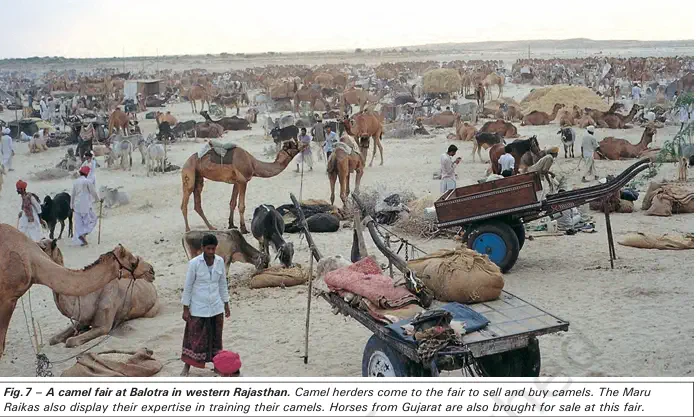
4. Raikas of Rajasthan:
- Lived in deserts with meagre, uncertain rainfall.
- Dual livelihood: Combined cultivation + pastoralism.
- Seasonal Cycle:
a. Monsoon: Stayed in villages (Barmer, Jaisalmer, Jodhpur, Bikaner). Grazing grounds available.
b. By October: Moved out as pastures dried up, searched for new pasture & water.
c. Returned again during next monsoon. - Sub-groups:
a. Maru (Desert) Raikas → herded camels.
b. Others → reared sheep & goats.
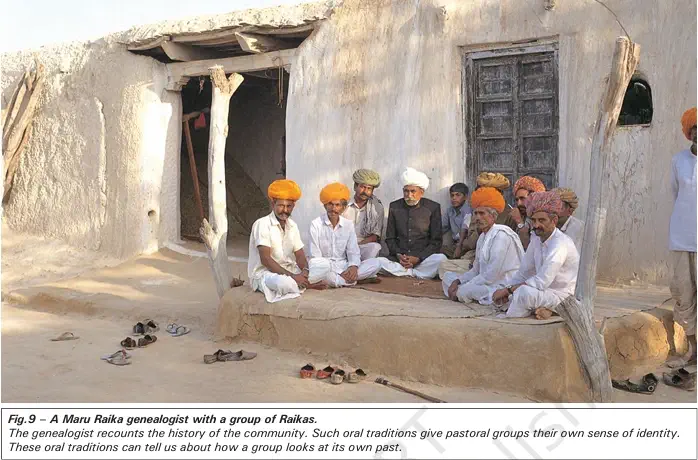
5. Common Features of Pastoral Life:
- Pastoral life depended on careful planning & adaptation:
a. Judging duration of stay in one area.
b. Locating pasture & water.
c. Timing seasonal movements correctly.
d. Building relationships with farmers (grazing on harvested fields, manuring soil). - Survival came from diverse activities:
a. Cultivation.
b. Trade.
c. Herding.

Source B: Accounts of Travellers about Pastoral Groups
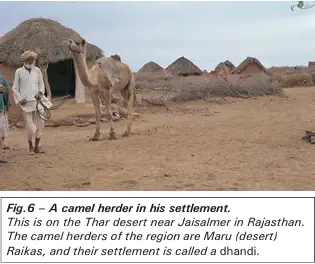
- Pastoral life through travellers’ accounts – Many travellers documented the lives of pastoral groups in the 19th century.
- Francis Buchanan’s visit – In the early 19th century, Buchanan visited the Gollas during his travels through Mysore.
- Settlement pattern of Gollas – Golla families lived in small villages near the skirts of the woods.
- Livelihood sources –
a. Cultivated small patches of land.
b. Kept cattle.
c. Sold dairy produce in towns. - Large family structure – Golla families were very numerous, with 7–8 young men common in each family.
- Division of labour –
a. 2–3 young men attended flocks in the woods.
b. The remaining cultivated fields, supplied towns with firewood and straw for thatch. - Variety of activities – Gollas were engaged in pastoralism, agriculture, and supplying forest products.
New words
- Bhabar – A dry forested area below the foothills of Garhwal and Kumaun
- Bugyal – Vast meadows in the high mountains
- Kharif – The autumn crop, usually harvested between September and October
- Rabi – The spring crop, usually harvested after March
- Stubble – Lower ends of grain stalks left in the ground after harvesting
Next & Previous Topics of NCERT/CBSE History Class 9 Chapter 5: Pastoralists in the Modern World
| Topics No. | Topics Name |
|---|---|
| 1 | Pastoral Nomads and their Movements |
| 2 | Colonial Rule and Pastoral Life |
| 3 | Pastoralism in Africa |
MCQs on NCERT History Class 9 Chapter 5 Topic – Pastoral Nomads and their Movements
Here are the top exam-oriented MCQ-type questions on “Pastoral Nomads and their Movements” that you should prepare for your CBSE or state board exams:
Question 1. Which community is known as great herders of goats and sheep in Jammu and Kashmir?
a) Gaddis
b) Gujjar Bakarwals
c) Raikas
d) Banjaras
Answer: b) Gujjar Bakarwals
Question 2. Where did the Gujjar Bakarwals live with their herds during winter?
a) Lahul and Spiti
b) Pir Panjal
c) Siwalik range
d) Kashmir valley
Answer: c) Siwalik range
Question 3. What is the term used for a group of several households travelling together?
a) Bugyal
b) Kafila
c) Bhabar
d) Stubble
Answer: b) Kafila
Question 4. In summer, where did the Gujjar Bakarwals take their herds?
a) Siwalik hills
b) Kashmir valley
c) Konkan
d) Rajasthan deserts
Answer: b) Kashmir valley
Question 5. Which shepherd community of Himachal Pradesh followed a similar migration cycle as Bakarwals?
a) Gollas
b) Kurumas
c) Gaddis
d) Dhangars
Answer: c) Gaddis
Question 6. In which months did the Gaddis begin their return movement from Lahul and Spiti?
a) April
b) June
c) September
d) December
Answer: c) September
Question 7. Which community of Garhwal and Kumaon moved to bugyals in summer?
a) Gujjar cattle herders
b) Raikas
c) Banjaras
d) Dhangars
Answer: a) Gujjar cattle herders
Question 8. What does the term bugyal mean?
a) Dry forest below foothills
b) High mountain meadows
c) Lower stalks of grains
d) Autumn crop
Answer: b) High mountain meadows
Question 9. What does the term bhabar refer to?
a) Swampy wetland
b) Dry forested area below foothills
c) Winter grazing ground
d) Plateau soil
Answer: b) Dry forested area below foothills
Question 10. According to G.C. Barnes (1850s), the Gujjars’ wealth mainly consisted of –
a) Sheep
b) Buffaloes
c) Camels
d) Goats
Answer: b) Buffaloes
Question 11. Which pastoral community of Maharashtra had a population of 467,000 in the early 20th century?
a) Kurubas
b) Dhangars
c) Gollas
d) Raikas
Answer: b) Dhangars
Question 12. During the monsoon, where did the Dhangar shepherds stay?
a) Konkan
b) Siwalik range
c) Central plateau of Maharashtra
d) Rajasthan desert
Answer: c) Central plateau of Maharashtra
Question 13. Why were Dhangar flocks welcomed in the Konkan region?
a) For grazing forest lands
b) For supplying dairy products
c) For manuring fields and feeding on stubble
d) For protecting crops
Answer: c) For manuring fields and feeding on stubble
Question 14. Which pastoral groups were mainly found in Karnataka and Andhra Pradesh?
a) Banjaras and Raikas
b) Kurumas, Kurubas and Gollas
c) Gaddis and Bakarwals
d) Sherpas and Bhotiyas
Answer: b) Kurumas, Kurubas and Gollas
Question 15. Which group of pastoralists were famous blanket weavers?
a) Kurubas
b) Raikas
c) Banjaras
d) Gollas
Answer: a) Kurubas
Question 16. Which animals were reared by the Raikas of Rajasthan?
a) Camels, sheep and goats
b) Cattle and buffaloes
c) Horses and donkeys
d) Pigs and oxen
Answer: a) Camels, sheep and goats
Question 17. The Maru Raikas of Rajasthan were mainly –
a) Sheep rearers
b) Camel herders
c) Cattle traders
d) Blanket weavers
Answer: b) Camel herders
Question 18. Which well-known group of graziers moved long distances selling plough cattle?
a) Gaddis
b) Bakarwals
c) Banjaras
d) Kurubas
Answer: c) Banjaras
Question 19. What did pastoralists need to calculate before moving with their herds?
a) Timing of monsoon
b) Availability of stubble
c) Distance of the journey
d) All of the above
Answer: d) All of the above
Question 20. What combination of activities did pastoralists usually follow to sustain their life?
a) Cultivation only
b) Herding and fishing
c) Cultivation, trade and herding
d) Weaving only
Answer: c) Cultivation, trade and herding

